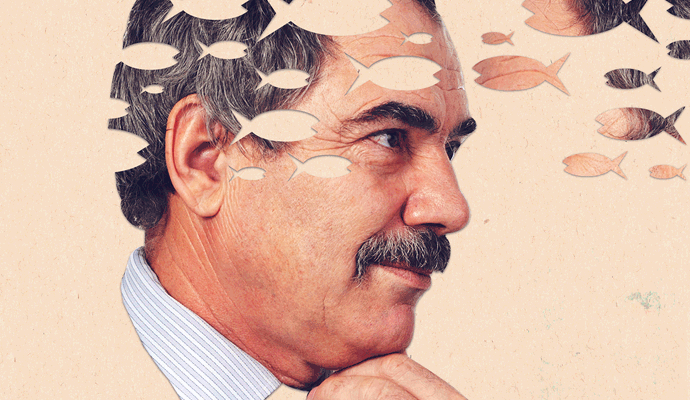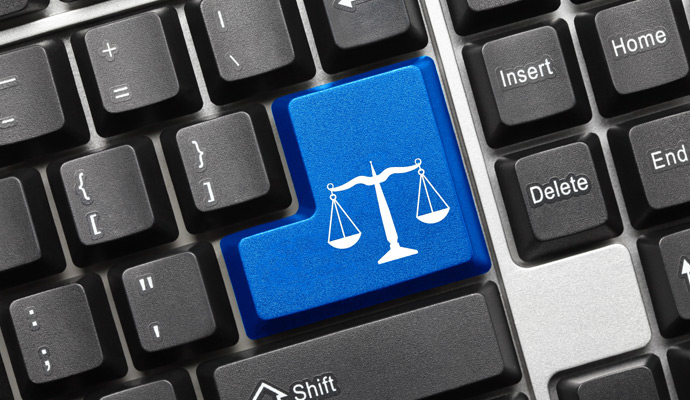Staring down my own unconscious bias
Ingrained perceptions and assumptions can do significant damage if we don’t take action.
Recently I took a test, and I was shocked by the results. That’s not something I’m used to; through high school, college, and business school, I always prepared diligently for exams, and felt confident when I walked out of the room. But this was a different kind of test: It was an assessment of my unconscious biases—the daily things we all do, without intention and malice, that can have a negative effect on others—based on my 41 years of life experience. And the outcome was not something that I could have predicted.
I had completed an Implicit Association Test. The concept was created by University of Washington professor Anthony G. Greenwald, who then developed and now maintains the online test with Harvard professor Mahzarin R. Banaji and University of Virginia professor Brian Nosek. It is designed to determine the feelings and preferences that are hidden in our minds. Banaji and Greenwald also wrote a book on the subject, Blindspot: Hidden Biases of Good People.
The test has several parts, during which you are asked to categorize names that appear on your screen as being male or female, and words that appear as being associated with career or family. It starts off simple, with just one category on each side of your screen (for example, male on the left, female on the right), but increases in complexity as the two categories—male/female and career/family—are combined and then swapped. So, during one portion of the test, male and career are paired, and in a later portion, male and family are paired. Your bias is determined by comparing the amount of time it takes you to make your category choices during different parts of the test.
Surely, I thought going in, I don’t have unconscious bias when it comes to gender roles. I champion diversity in my firm. I serve as a role model and mentor to scores of women. Yet my results revealed that one of my largest biases was the association of career with men and family with women. Interestingly, this is not only very similar to Banaji’s own results, but also aligned with more than half of Web respondents’ scores. (My personal results report said that 56 percent had either a “moderate” or “strong” association of this type—mine was “strong.”)
Do I believe women cannot have successful careers? Clearly not! However, my results are an accurate personal association based on how I grew up. My mom stopped working for almost 10 years to raise my brother and me. And although she eventually went back to work, that wasn’t the norm in my neighborhood, about 30 miles east of Pittsburgh. In my higher education and early career—an undergraduate major in engineering, followed by technology consulting, and then an MBA—I was mostly surrounded by men. I had strong role models and felt empowered to build my own career, but I still carried a bias that informed how I believed most people would perform.
It stands to reason that if we recognize what our unconscious biases are, we can overcome them. Unfortunately that is not necessarily the case, according to several recent studies. Wharton professor Adam Grant and Facebook COO Sheryl Sandberg recently discussed these findings in the New York Times in their article “When Talking about Bias Backfires.” Telling people that a bias is common can actually legitimize and perpetuate stereotypes, they wrote, unless they are also told explicitly that it is a bad thing that others are actively working against. This got me thinking about my last post, in which I wrote that recognizing what makes us different can foster a sense of cohesiveness. Unconscious bias proves those same differences also cause us to make snap judgments—judgments that inherently challenge that cohesiveness.
Examples in the workplace abound. Consider age bias. For years, we’ve been inundated with articles about millennials, and how they seek out personal glory and instant gratification—that they aren’t motivated to work their way up in one company, but instead are likely to bounce around (a recent Washington Post report refutes this idea). In my own experience, I’ve seen older employees simply not pay much attention to their younger counterparts or worry much about their development until they’ve been around for several years. Of course, younger employees also make assumptions. They think that more senior team members don’t have the time or inclination to “get involved.” I’ve seen partners left off social invitations because the organizers think they wouldn’t want to attend.
Employees young and old can make a concerted effort to act in a way that defies those assumptions. If you are in the latter group, reach out to that bright, young new hire. And in doing so, you may just find that he or she has leadership potential, and much to contribute. If you are in the former group, see if that senior partner wants to join your next outing. You can create an opportunity to build a great personal relationship, and to strengthen the cohesion of your team.
Other examples include education bias: A new employee with a high-pedigree MBA may be perceived as more valuable than an industry hire. Or relationship-status bias: A single or childless employee might experience more pushback taking personal time than a counterpart who is married or has kids. And of course there are biases based on culture, race, sexual orientation, and all the things that make us diverse.
Education bias: A high-pedigree MBA may be perceived as more valuable than an industry hire.
Now that I am aware of my own biases, I’ll be watching carefully to see when they start to manifest themselves—and working proactively to counteract them. As Grant and Sandberg stressed in their article, unconscious bias is unacceptable. We all need to recognize that, and actively work to fight it. We’re in this together.





